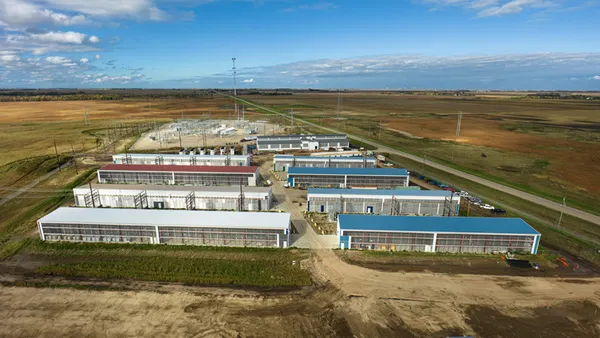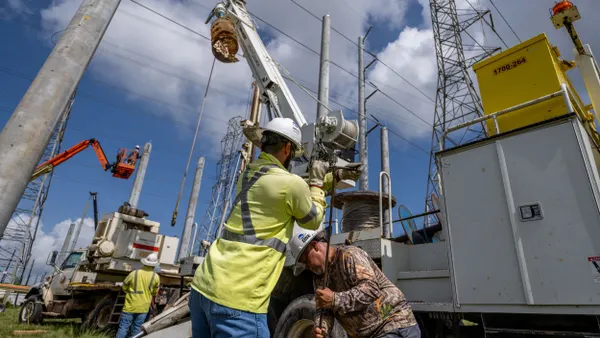Dive Brief:
- The Public Utility Commission of Texas on Thursday approved Oncor Electric Delivery’s $3 billion system resiliency plan, which aims to accelerate grid upgrades, reduce the duration of severe weather outages and address other physical and cybersecurity risks, including wildfires.
- Oncor’s plan was based on two decades of weather and grid data, and includes increases in vegetation management near power lines and investments in automation. The improvements will “substantially reduce outage minutes,” Oncor CEO Allen Nye said in a statement.
- Texas lawmakers passed legislation last year authorizing the state’s utilities to submit resiliency plans aimed at bolstering grid reliability. Oncor’s proposal was the first to be approved; regulators are still considering plans from American Electric Power Texas, Texas-New Mexico Power Co. and Entergy Texas.
Dive Insight:
Oncor’s resiliency plan represents a “substantial investment” paid for by ratepayers, but Commissioner Lori Cobos said she was “encouraged by the strong collaboration among parties that ultimately resulted in a settlement agreement and the data-driven, granular process that was open and transparent.”
The settlement agreement that led leading to Oncor’s SRP approval was supported by PUCT’s legal staff, consumer groups and cities, Cobos said. The Electric Reliability Council of Texas, the Alliance for Retail Markets and the Texas Energy Association for Marketers did not join the agreement but did not oppose it.
“These investments have been methodically selected to have the greatest impact in proactively addressing potential outage causes,” Nye said. “We will start implementing our SRP immediately and will keep customers informed of our progress in their communities.”
Investments outlined in Oncor’s system resiliency plan include:
- Modernizing and hardening legacy overhead system, including poles and crossarms;
- Improvements to Oncor’s underground system, including switchgear automation;
- Optimizing distribution automation through new ties, capacity and intelligent switches; and,
- Enhanced cybersecurity risk mitigation and investments in the utility's digital infrastructure.
Cobos asked Oncor representatives at the PUCT’s open meeting last week if the plan takes into account efforts to “sectionalize” the utility’s distribution grid. That approach includes creating additional ties between feeders from different substations to allow system flexibility to recover from an outage or to de-energize some portions while leaving others operating, potentially during a wildfire.
“Particularly where we are building new, that's just part of the current modern design standard. We will kind of build that sectionalization in,” said Brian Lloyd, Oncor’s vice president of regulatory policy. The utility’s system resiliency plan “really lets us bring that technology to the older parts of our system, [the parts] that when we built them decades and decades ago, that was not really the current design standard.”
In addition to the substantial investment in its distribution system, Oncor also expects to expand its transmission system.
In September, the PUCT approved an electric reliability plan for the Permian Basin region, where the oil and gas industry, data centers and other loads are driving electricity demand rapidly higher. The Permian reliability plan includes about $4 billion in local projects that can commence immediately, and another $9 billion for projects that will depend on whether regulators opt to move ahead with 765-kV transmission lines.
“We expect Oncor to capture a significant portion of the new capital investment opportunities given our current operations in the Permian Basin and ERCOT’s preliminary recommendations,” Nye said earlier this month during the utility’s third-quarter earnings call. Most of the local projects need to be in service by 2030 to meet expected demand, he noted.














